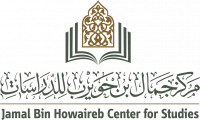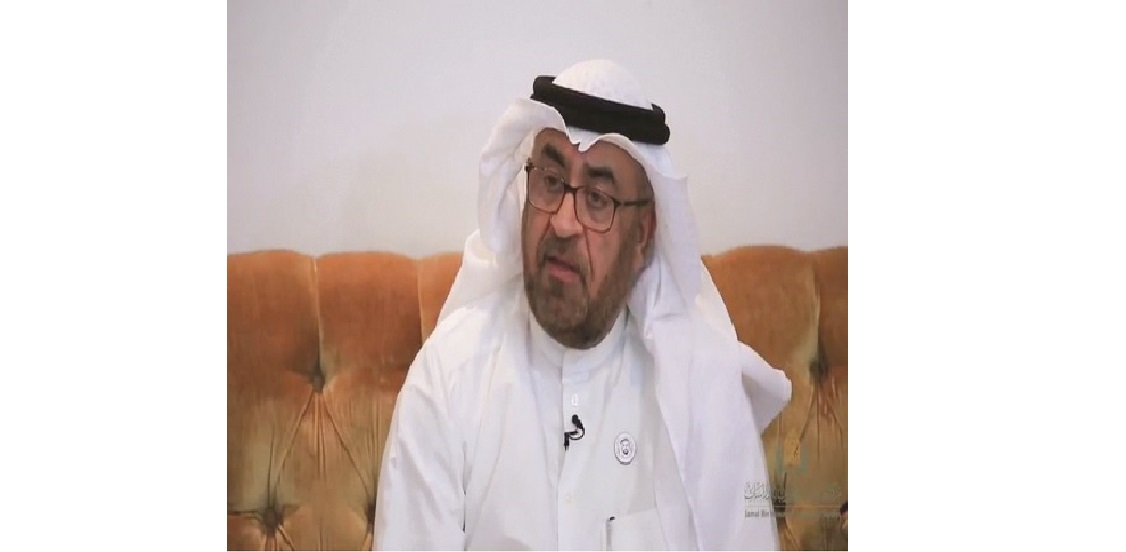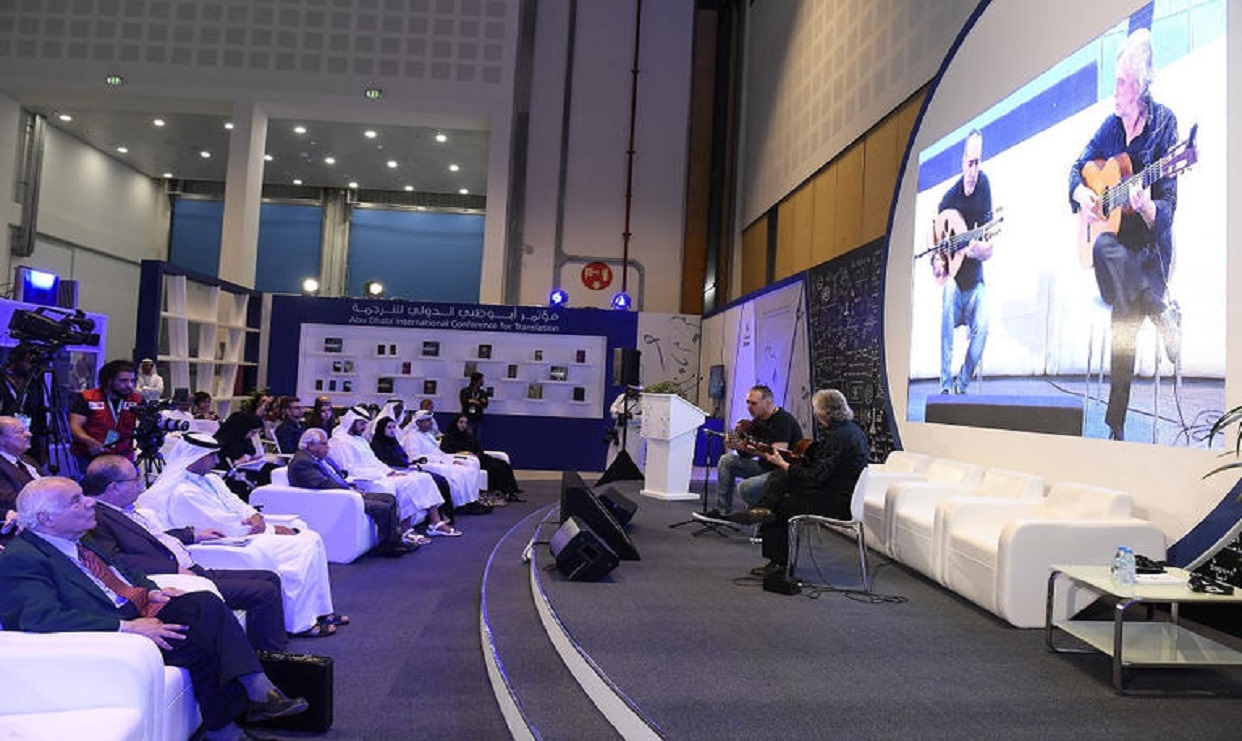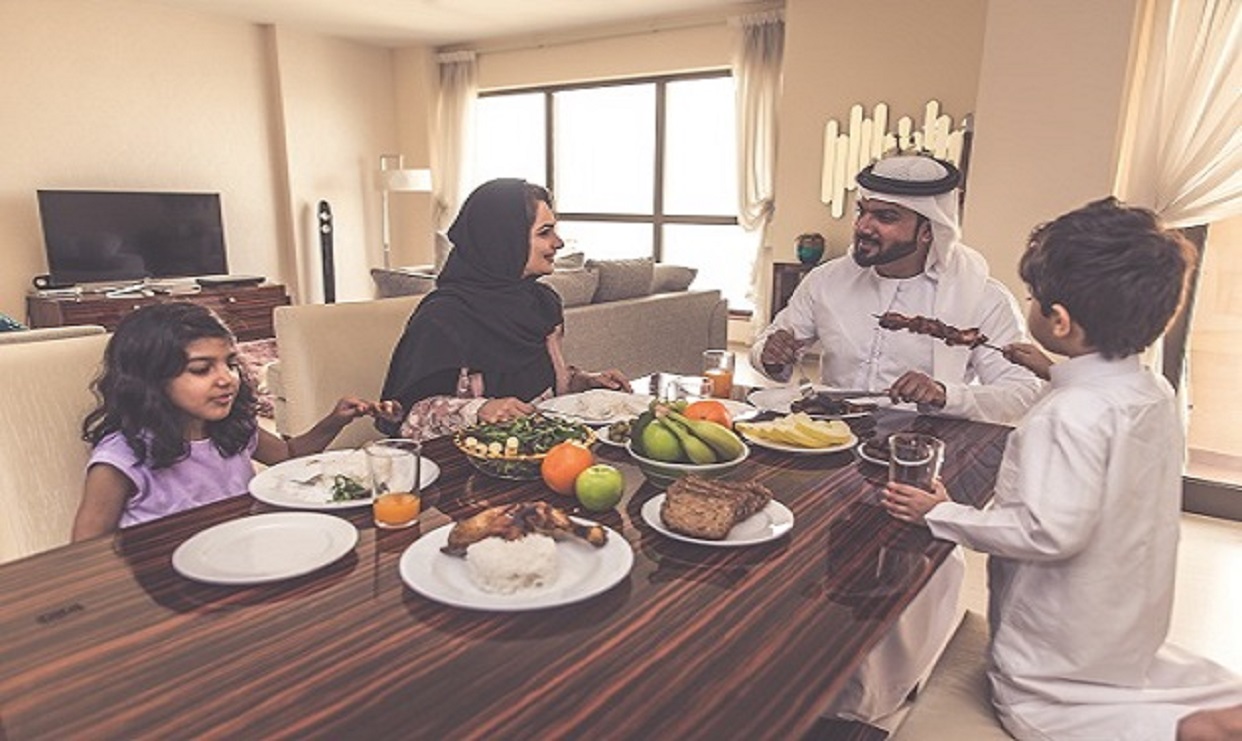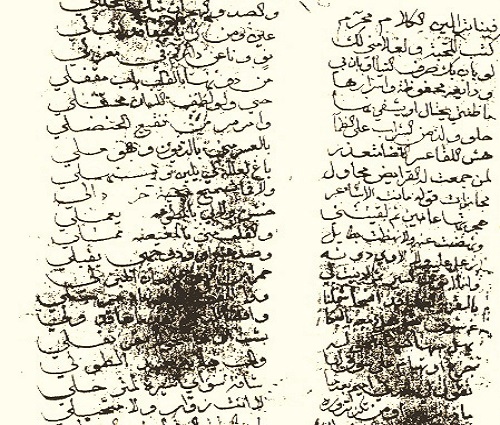2,602 عدد المشاهدات
Follow-up: Khalil Al-Bari
Artist and calligrapher Khalid Ali Al Jallaf said: The flourishing of arts in general, and the art of calligraphy in particular, underlines the strength and greatness of the state. The UAE is a major contributor to the flourishing and growth of the art of Arabic calligraphy.
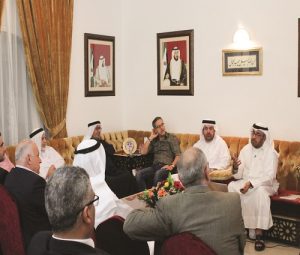
Al Jallaf called for returning this art to school to be studied as an independent subject not as a co-curricular of the Arabic language, requesting media to pay attention to this art as a national art and to allocate it within the curriculum of art colleges in universities and institutes. He further requested establishing calligraphy training centers throughout the country, setting up a national museum of calligraphy, organizing competitions for calligraphers in which the winning works are bought to encourage them, and allocating grants for those who want to learn and master calligraphy
The lecture was held at Jamal Bin Huwaireb Studies Centre at its new premises in Al Jumeirah, within the framework of its cultural and literary program, which aims to shed light on the most important intellectual, literary and cultural issues of concern to society
The lecture was attended by Ahmed Al Jumairi, Undersecretary of the Ministry of Labor and Social Affairs, and former Director General of Dubai Health Authority, Dr. Shihab Ghanem researcher and poet, Dr. Khalid Wazani Strategy & Knowledge Advisor at MBRF, and a number of journalists, media members and researchers, including calligrapher Mohammad Abu Obeid from Al Arabiya Channel.
Jamal Bin Huwaireb CEO of the Mohammed Bin Rashid Al Maktoum Knowledge Foundation and Director of the JBHSC welcomed the lecturer and the guests saying: “The Center has chosen this subject due to its importance in building our cultural and cognitive life, and because many people are not aware of the role of the State and its efforts in scaling up the level of Arabic calligraphy and its prosperity. Another reason is that some people say: the people of United Arab Emirates are interested in building skyscrapers, without paying attention to some cultural and heritage aspects, such as Arabic calligraphy”
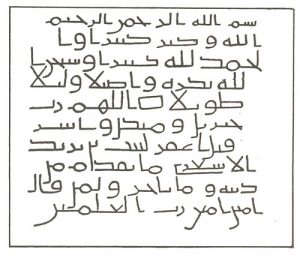
“But the truth will be told by a witness and a pioneer of this art, Mr. Khalid Ali Al Jallaf, President of the Emirates Society for Arabic Calligraphy, and the deputy editor of the “Arab letters” magazine, specializing in the field of Arabic calligraphy. Al Jallaf is passionate about drawing and calligraphy, he organized four personal exhibitions and an exhibition at the University of Sharjah”, added Bin Huwaireb.
A strong state .. A prosperous calligraphy
“When I talk about the art of calligraphy, I find myself talking about me and about the history of each and every individual. I have always been interested in painting and in the art of Arabic calligraphy since childhood, and the older I grow, the greater my interest gets in this passion that has become not only a part of my life but my whole life. I have been an eyewitness to the flourishing and sophistication of this art in the UAE, as a result of the interest of many people and senior officials, led by His Highness Sheikh Mohammed bin Rashid Al Maktoum, Vice President and Prime Minister of the UAE and Ruler of Dubai, and His Highness Sheikh Dr. Sultan bin Mohammed Al Qasimi, Member of the Supreme Council and Ruler of Sharjah, who were keen on providing all that would help to elevate this art to global levels”, said Al Jallaf. Al Jallaf also stressed that the stronger a state is, the more thriving is the art in general, and the art of calligraphy in particular.
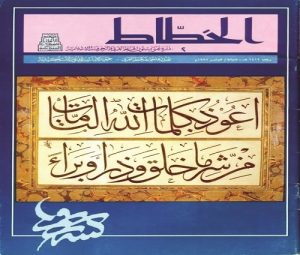
Since its inception, the UAE has generously supported art and artists, especially visual artists and calligraphers. Al Jallaf talked about his first experience; he was taught the rules of drawing by Professor Abdul Qader Al-Rayes, who advised him to stay away from drawing, and to dedicate himself to Arabic calligraphy, where there were no modern techniques.
The first beginnings
Al Jallaf traced the threshold of calligraphy; several accounts and stories say that calligraphy began with writing that started with the formation of states, with the emergence of the need for documentation.
Writing has passed through several stages:
Pictures: when people used to express their needs by drawing
Characters: where the sun symbolizes the day, the moon symbolizes the night, and lion symbolizes the forest and strength
Syllables: they represent parts of the word of the speaker.
Vocal: the first letter of the word expresses the entire word, “A stands for apple,” D stands for dog” … and so on
The alphabets: where each character was assigned with a symbol. Sumerians were the first to write in cuneiform characters in Babylon and Assyria and their surroundings, but these characters vanished due to their difficulty.
Afterwards, letters were used in the Hittite state in the Levant, but they also disappeared due to their difficulty, followed by the Phoenician, Chinese and Egyptian Hieroglyphic letters.
The Phoenicians were merchants, and when they visited Egypt they found that the Egyptians discovered the hieroglyphic writing. Thus, they took 15 hieroglyphic letters and incorporated them into their alphabet. The Canaanites soon took the alphabet from the Phoenicians. In Yemen, people wrote in Nabataean letters, and this was discovered through the writing on the tomb of Fahr ibn Sulaymi.
“It turns out that the Nabataean letters in Yemen were similar to the writings of Hejaz, and this may be self-evident as a result of the “winter and summer trips” made by the people of Quraish to Yemen”, added Al-Jallaf, ” The Qurashi, Makki, Madani and Hejazi are the oldest Arabic fonts. The people of Kufa had developed the Hejaz font before the mission of Prophet Mohammed. In the period of the Prophet Mohammed, may peace be upon him, the Companions were writing the Koran and the Hadith (speech) of the Prophet in Hejaz, thanks to Ali bin Abi Talib, may Allah be pleased with him. Hajjaj ibn Yusuf al-Thaqafi was the first to use dots in the Holy Quran, and Abu al-Aswad al-Dawali was the first to use supplementary diacritics “, added Al Jallaf.
The lecturer, for example, mentioned the flourishing of the Arabic calligraphy in the days of the Islamic state in Andalusia and Kairouan. With the boom of the translation movement, there were about 6,000 calligraphers and scribers in the time of Abdul Rahman Al-Nasser. Whereas, in Persia they developed the Arabic calligraphy, but they did not invent it. Thus, there is no so-called Persian font; it is an Arabic font that was developed in their own language encapsulating many of the Arabic vocabularies.
UAE and the Arabic Calligraphy
“Many people do not know the contribution and the role played by the UAE in flourishing the art of Arabic calligraphy. Did the UAE know the Arabic calligraphy or not?” said artist Khalid Al Jallaf.
“The answer is yes. We have found evidence from fathers and ancestors of the existence and prosperity of the Arabic calligraphy, despite the spread of illiteracy during the mid-nineteenth century until the middle of the twentieth century. There were three parties concerned with writing for illiterate population, in addition to teaching them to read the Koran; the writer or “Karani”, “Mutawaa” (old instructors), and the “Katatib” (old teaching often attached to a mosque).
Those parties were well-known before the existence of regular schools such as Al-Falah and Ahmadiyya, in the early twentieth century, and before the arrival of the Kuwaiti educational mission, which had a great deal of merit in education progress and the development of the Arabic calligraphy in its various forms. Poets and writers in the Arabian Gulf region, precisely in the UAE, used to write down poems, compositions and books of verse in a beautiful handwriting by calligraphers, while others used to write their works by themselves such as Sheikh Mohammed Abdulrahman bin Hafez, Hamid Bin Sultan Al Shamsi, and poet Mubarak Al-Aqili.”, added Al Jallaf.
Al Jallaf mentioned some of the calligraphers who came to the UAE and who were credited to teach UAE’s calligraphers and artists the origins and forms of Arabic calligraphy, such as Nizar al-Douri, Ali Nadda and Mohammed al-Musawi. He also stressed that all these calligraphers were the students of Hashim al-Baghdadi, one of the greatest Arab calligraphers.
Al Jallaf referred to the role of the public and private sectors in developing and flourishing the art of calligraphy in the UAE, stressing that some institutions have a great deal of merit in this field, such as Sharjah Department of Culture and The Cultural and Scientific Association (CSA) in Dubai. The former director of CSA author and writer Mohammed Al-Murr called to issue the first magazine dedicated to Arabic calligraphy in the Arab world; “Arab Letters”, which is still issued periodically, besides supporting Arabic calligraphy competition organized by Al Owais Foundation.
Al Jallaf also referred to role of the Abu Dhabi Cultural Center in supporting and developing the art of Arabic calligraphy through its regular workshops. The first Arabic calligraphy exhibition was organized in Abu Dhabi and featured the winning paintings in Hamed Al Hamidi Competition.
The Dubai Culture & Arts Authority held the Dubai International Calligraphy Exhibition in the presence and under the patronage of His Highness Sheikh Mohammed bin Rashid Al Maktoum, Vice President and Prime Minister of the UAE and Ruler of Dubai.
The lecturer pointed to the interest of the Ministry of Culture and Community Development in developing Arabic calligraphy and assisting calligraphers and artists through the “Burda” competition which is held in the holy month of Ramadan with the participation of around 30 calligraphers working on writing the Holy Quran in various forms of Arabic calligraphy.
Sharjah and the Arabic calligraphy
Khalid Al Jallaf commended the Government of Sharjah and its institutions for their role in enhancing and thriving Arabic calligraphy under the directives of His Highness Sheikh Dr. Sultan bin Mohammed Al Qasimi, Member of the Supreme Council and Ruler of Sharjah, the spiritual father of the cultural and literary movement in Sharjah in particular, and the UAE in general. His Highness allocated a percentage of Sharjah’s budget to support and develop the cultural movement, he is also keen to attend all cultural and literary events and activities in Sharjah, including those related to the arts of calligraphy.
The lecturer referred to the programs of the Sharjah Department of Culture, which are concerned with the Arabic calligraphy. Sharjah Center for the Art of Arabic Calligraphy was the result of these programs and has branches in all the cities of the Emirate, in addition to Sharjah Calligraphy Biennial. Sharjah has also set up a center for teaching calligraphy. There is currently ongoing project called “Katatib”. Perhaps, the Sharjah Museum seems to be the only museum catering for Arabic calligraphy.
Al Jallaf mentioned the role of the Emirates Society for Arabic Calligraphy and Islamic Ornamentation, which was founded about four years ago, by decree of His Highness the Ruler of Sharjah.
Projects and hardship
Al Jallaf unveiled the exhibition of Arabic Calligraphy in Sharjah (held in April 2018) entitled “Jawhar Zayed Al Ensan” (the essence of Zayed), featuring a number of elite calligraphers and artists from the UAE and the Arab countries. He also confirmed that Dubai has more exhibits and galleries than other Arab Countries. For example, one exhibit was held in Damascus, two exhibits in Egypt and 14 exhibits in the UAE; eight in Sharjah and six in Dubai. “If Istanbul today is a popular market for Arabic calligraphy, It is only thanks to the UAE, its dignitaries and artists”, said Al Jallaf.
Highlighting obstacles that prevent further growth and prosperity of the art of Arabic calligraphy, Al Jallaf stressed that it is due to the neglect of Arabic calligraphy in schools. The bad handwriting of our students today, resulted from the absence of teaching calligraphy in schools.
Moreover, he mentioned that the cause of hardships is the duplication of exhibitions and activities related to it. Eventually, a kind of coordination, led by the Emirates Society for Arabic Calligraphy, has emerged, hopefully, this role will be completed to bear fruit.
“In all countries, the art of calligraphy is a masculine art. Whereas, in the UAE it is a female art, and this may be due to males’ abandonment after the field has suffered from sagging and chaos. However, Istanbul Calligraphy Certificate is awarded only after 8 years of study”, add Al Jallaf.
Al Jallaf concluded by saying “a number of factors should be available to revive the art of calligraphy in the country:
-Returning Arabic calligraphy to school curriculum.
-Treating Arabic calligraphy as national art by media through promoting this aspect.
– Allocating it as a course in institutes and colleges of universities
-Establishing calligraphy training centers in all emirates, similar to the Emirate of Sharjah
-Setting up a national museum of Arabic calligraphy, similar to Japan and China
-Organizing competitions to encourage Emirati artists and calligraphers, and we started the first step through the “Zayed Al Ensan” Exhibition.
-Assigning chairs or scholarships to teach students who want to learn Arabic calligraphy.
Cyberspace
At the end of the session, Jamal Bin Huwaireb said: “I believe that the art of calligraphy should go out to the public, and spread through social media. It should be present in international exhibitions, otherwise, it will remain immutable. The private sector should also be involved in the dissemination and development of this national issue; in order to contribute to the flourishing of Arabic calligraphy, private sector institutions should open relevant councils and centers”
“I once asked the Ministry of Education, what did you do to develop the Arabic calligraphy? They replied that students write on computers and there is no longer any need to focus on the Arabic calligraphy”. This is the case here and in all countries, added Bin Huwaireb.
“The private sector in the country had a great deal of merit in developing and disseminating education, consequently maintaining the Arabic calligraphy. For instance, Alfalah School was built by Zainal, may his soul rest in peace, and Ahmadiyah School and Assadaa School were built by Ben Dalmook, may his soul rest in peace. Therefore, this sector should contribute to maintaining and promoting the Arabic calligraphy.
Here, I would like to refer to the great role of His Highness Sheikh Mohammed bin Rashid Al Maktoum and His Highness Sheikh Sultan bin Mohammed Al Qasimi in preserving and developing the Arabic calligraphy. In addition to the role of His Excellency Mohamed Al Murr, His Excellency Dr. Anwar Gargash, and His Excellency Abdulrahman Al Owaisi in this field”, said Bin Huwaireb.
Audience interaction
-“What about Dubai font, is not it a modernizing font? asked Mr. Ahmed Al-Jumairi,
“Dubai font is only a digital font, developed from Al Nasskh font, therefore it cannot be considered a development of the Arabic calligraphy”, replied Al-Jallaf.
-“Prior to Islam, Eastern Church, was using calligraphy, wasn’t it?” inquired Nader Makansi.
“Were the churches praying in Arabic? The Copts in Egypt did not speak Arabic, neither did the churches in Syria; they spoke the Syriac language, so how could they use Arabic calligraphy?, replied Al Jallaf.
-“Why did the Arabic calligraphy stop developing after reaching a certain stage? Why was it associated with religion and mysticism, and was not used in poetry, for example?” inquired Al Arabiya Channel presenter Mohammad Abu Obeid.
To which Al-Jallaf replied, Ibn Muqla was the first to set the rules of calligraphy during the Abbasid Caliphate, but Arabic calligraphy was at its zenith during the Ottoman Empire, and started to deteriorate during the Turkish state. I asked some Turkish people why they are not interested in the Arabic calligraphy, as was the case in the time of the Ottomans. Some replied that the Arabic calligraphy is deteriorating now. But the Turks have returned to the origins leading the development of the Arabic calligraphy today.
In Iran, too, one of the calligraphers discovered what is called the “Mualla font” provoking Iranian people to wrath. As for the Arab world, I think that the development of the Arabic calligraphy is linked, in one way or another, to the overall situation in the Arab countries.
Al Jallaf continued by saying “there is hope in this region, as we see a popular and formal desire to elevate the Arabic calligraphy, thanks to His Highness Sheikh Mohammed bin Rashid Al Maktoum and His Highness Sheikh Sultan bin Mohammed Al Qasimi, whom we consider the father of culture and arts in the United Arab Emirates.
Al Jallaf gave an example when he talked about his exhibition “Flashes of Thought” for the Arabic calligraphy, through which he displayed paintings featuring poems of Sheikh Mohammed bin Rashid. He said that he participated in some of these paintings in an exhibition held in Brazil on the occasion of its National Day. One of the paintings that bears a quote of Sheikh Mohammed bin Rashid, “the function of government is to achieve happiness for the community” drew the attention of one of the Brazilian female politicians, thus she said:” I would appreciate if you may present this painting to our prime minister or the head of state!!”
-Dr. Shihab Ghanem asked about the names of some contemporary Emirati calligraphers. To which Al Jallaf replied, we have many names, including: Hussein Al-Hashemi Asseri, may God speed up his recovery, Professor Mohamed Mandy, and Mohammed Issa Khalfan, Vice President of the Emirates Society for Arabic Calligraphy.
We wish a bright future in Arabic calligraphy for Fatima Al-Dhahnani, Fatima Al-Dhaheri, Imran Al Balushi, Sheikha Mahboub and Fatima Al-Bakali. I will be addressing His Highness Sheikh Sultan bin Mohammed Al Qasimi to adopt these names in order to pursue enhancing and specialized courses of the Arabic calligraphy in Istanbul, which is currently the capital of Arabic calligraphy.
Jamal bin Huwaireb concluded the session with an anecdote about the sheikh of Arab calligraphers saying “once I was hosted by the great professor Hassan Shalabi, who is considered the sheikh of Arab calligraphers, and I recited the following verses:
You stole my heart unjustly
Give it back to me or it shall be
Broken, she looked at me gently
As if she was a picture
painted by Shalabi
